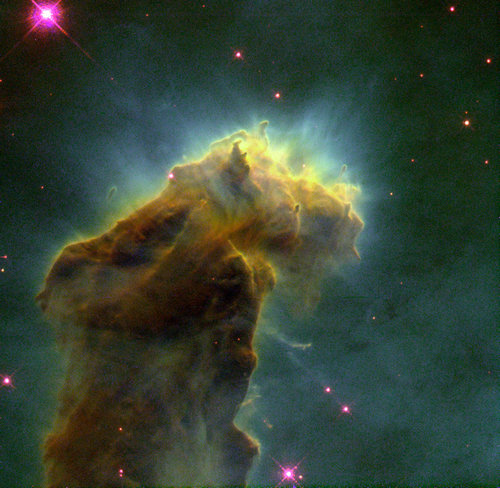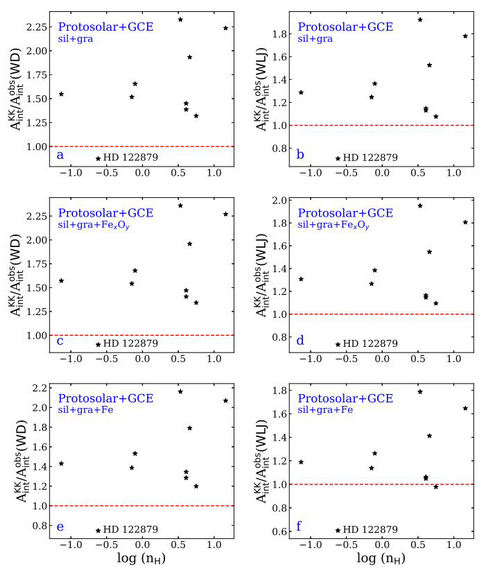Chinese researchers' new view on elements in the interstellar medium
The interstellar space is full of gas and tiny solid dust- the interstellar medium(ISM). During the evolution of the Milky Way, the interstellar medium will undergo numerous cycles from diffuse interstellar clouds to stars, and finally back to diffuse interstellar clouds.
Studying the chemical and physical property of interstellar medium, especially interstellar dust, plays an important role in understanding the evolution of galaxies, the formation of stars and planetary systems, and even the origin of life.
A new study, led by Prof. Gang Zhao and Dr. Wenbo Zuo from National Astronomical Observatories of Chinese Academy of Sciences (NAOC) and Prof. Aigen Li from University of Missouri, provides some interesting results about the interstellar extinction and elemental abundance.
This study result was published in The Astrophysical Journal Supplement Series in February, 2021.
Elements in the interstellar medium (ISM) exist in the form of gas or dust. The gas-phase elemental abundance can be measured for their spectrum, the elemental abundance locked in dust is derived by assuming a total abundance or reference abundance and then from which subtracting off the gas-phase abundance. "Historically, the reference abundance was commonly assumed to be solar abundance, with more and more observed evidences, another three assumptions were proposed," said Dr. Wenbo Zuo, the lead author of this study.
"In order to find the most appropriate set of interstellar reference abundance, we apply the model-independent Kramers–Kronig relation, which relates the wavelength-integrated extinction to the total dust volume. Our result supports the GCE-augmented protosolar abundance as a viable representation of the interstellar abundance," added Dr. Wenbo Zuo.
"By using model-independent Kramers-Kronig relationship, this paper finds that the GCE-augmented protosolar is the appropriate set of interstellar reference abundance, it would be a Gold Standard in this field," said Prof. Aigen Li.
"This is an interesting work, it provides a new path to study the nature of interstellar medium," said Prof. Gang Zhao.

Fig.1: The picture was taken on April 1, 1995 with the Hubble Space Telescope Wide Field and Planetary Camera 2. This structure shown in picture is a column of cool molecular hydrogen gas and dust that is an incubator for new stars. (Credit: NASA)

Fig.2:Comparison of the extinction based on elemental abundances and observed extinction curve for the 10 "gold" samples. (Credit: Wenbo Zuo)
This paper can be accessed at https://iopscience.iop.org/article/10.3847/1538-4365/abcc6d/pdf
Media Contact: Prof. XU Ang, annxu@nao.cas.cn